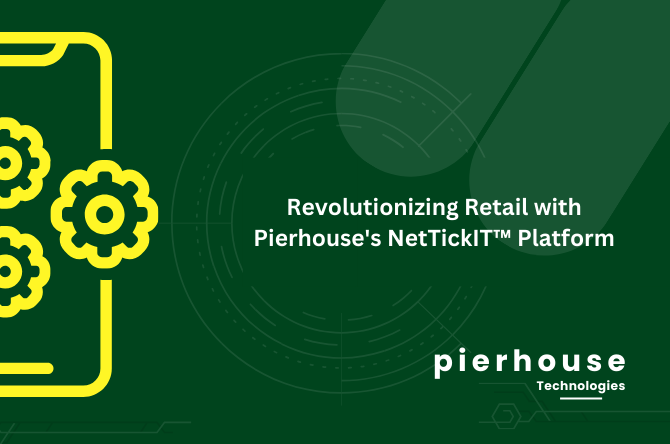In today’s eco-conscious world, sustainability is a pressing concern for retailers. They must adapt to meet consumer expectations and attract eco-conscious customers. This article presents a step-by-step roadmap for retailers to make their operations more sustainable. By following these strategies, retailers can reduce their environmental impact and position themselves for success in a changing market.
1. Assess Current Practices
Begin by embarking on a thorough and comprehensive assessment of your current operations, supply chain, and environmental impact. Take a closer look at every aspect of your business, from energy consumption to waste management and carbon emissions. This assessment will help you identify specific areas where sustainability improvements can be made. For instance, you may discover opportunities to optimize energy usage through energy-efficient technologies or practices. You can also explore strategies to enhance waste management, such as implementing recycling programs or minimizing packaging waste. By pinpointing these areas, you can lay the foundation for meaningful and impactful sustainability initiatives within your retail business.
2. Set Clear Sustainability Goals
Once you’ve conducted a thorough assessment of your operations and identified areas for improvement, it’s time to establish measurable and achievable sustainability goals for your retail business. These goals should align with your company’s values and long-term vision, as well as the expectations of your eco-conscious customers. When setting these goals, it’s important to be specific and realistic. For example, you may set a goal to reduce energy consumption by a certain percentage, implement recycling programs, or source a certain percentage of products from sustainable suppliers. By establishing these goals, you can create a clear roadmap for your sustainability initiatives and track progress over time. Moreover, these goals can motivate your team to work towards a shared vision and demonstrate your commitment to sustainability to your customers.

3. Engage Employees
Once you’ve conducted a thorough assessment of your operations and identified areas for improvement, it’s time to establish measurable and achievable sustainability goals for your retail business. These goals should align with your company’s values and long-term vision, as well as the expectations of your eco-conscious customers. When setting these goals, it’s important to be specific and realistic. For example, you may set a goal to reduce energy consumption by a certain percentage, implement recycling programs, or source a certain percentage of products from sustainable suppliers. By establishing these goals, you can create a clear roadmap for your sustainability initiatives and track progress over time. Moreover, these goals can motivate your team to work towards a shared vision and demonstrate your commitment to sustainability to your customers.
4. Optimize Energy Efficiency
To make significant strides in reducing energy consumption and embracing sustainability, it’s crucial to invest in energy-efficient technologies and practices. Start by replacing traditional lighting fixtures with energy-efficient LED lighting, which consumes significantly less electricity and has a longer lifespan. Additionally, consider upgrading your equipment to energy-efficient models, whether it’s refrigeration units, HVAC systems, or office appliances. Implementing automated systems that control heating, cooling, and lighting based on occupancy and time schedules can optimize energy usage. Regular energy audits are essential to identify areas for improvement and fine-tune your sustainability efforts. These audits help pinpoint energy inefficiencies, uncover opportunities for energy conservation, and track your progress over time. By making strategic investments in energy-efficient technologies and conducting regular energy audits, you can minimize your environmental footprint while achieving long-term cost savings.

5. Minimize Waste
To promote sustainability and minimize waste, it is crucial to implement robust waste reduction and recycling programs within your retail operations. Encourage your customers to participate in these efforts by bringing reusable bags, and consider offering incentives or rewards for their usage. Emphasize the importance of reducing single-use plastic by providing alternative options. Use ESLs to reduce paper usage. When it comes to packaging, opt for materials that are recyclable or compostable to minimize environmental impact. Collaborate with your suppliers to find innovative ways to reduce packaging waste throughout the supply chain. This could involve exploring packaging redesign, implementing more efficient packaging processes, or utilizing sustainable materials. By implementing waste reduction and recycling programs and collaborating with suppliers, you can significantly decrease your ecological footprint and contribute to a more sustainable retail ecosystem.
6. Source Ethically and Responsibly
To strengthen your commitment to sustainability, it is essential to develop a comprehensive and well-defined sustainable sourcing strategy. This strategy involves prioritizing suppliers who demonstrate a strong commitment to ethical and sustainable practices. Look for suppliers who adhere to rigorous standards and certifications such as Fair Trade, organic, or Forest Stewardship Council (FSC) for products like clothing, food, or paper-based materials. By partnering with these suppliers, you can ensure that the products you offer align with your sustainability goals and values. Collaborate closely with your suppliers to foster transparency and encourage continuous improvement in sustainability practices throughout the supply chain. This strategic approach to sourcing not only enables you to make a positive impact on the environment and local communities but also appeals to conscientious consumers who seek out sustainable and ethically sourced products. By developing a sustainable sourcing strategy, you can enhance your brand’s reputation and contribute to a more sustainable future.

7. Promote Sustainable Products
To foster sustainability and drive consumer awareness, it is crucial to actively highlight and promote sustainable products to your customers. Go beyond simply offering these products by providing clear and compelling information about their environmental benefits. Emphasize their use of organic or recycled materials, renewable energy sources, or their contribution to reduced carbon emissions. Transparently communicate the positive impact that these products have on the environment. Utilize various marketing channels, such as your website, social media platforms, and in-store displays, to educate and engage customers about the sustainability aspects of your products. Consider implementing marketing campaigns that specifically focus on sustainability, showcasing the benefits of making environmentally conscious choices. Additionally, incentivize customers to make sustainable choices through special offers, discounts, or loyalty programs. By actively promoting sustainable products and empowering customers to make informed choices, you can create a positive impact on consumer behavior and contribute to a more sustainable future.
8. Collaborate with Partners
To amplify the impact of your sustainability efforts, it is vital to collaborate with industry partners, non-profit organizations, and government agencies. Join forces with like-minded stakeholders to drive collective sustainability initiatives. Participate actively in industry-wide sustainability programs and initiatives to exchange knowledge, share best practices, and collectively tackle common challenges. By collaborating, you can leverage collective expertise and resources to accelerate progress towards a more sustainable future. Additionally, foster close collaboration with your suppliers to improve sustainability throughout the supply chain. Engage in open dialogue, set mutual sustainability goals, and work together to implement innovative solutions. Encourage transparency and traceability in the supply chain, ensuring that sustainability practices are upheld from sourcing to end product. By collaborating with industry partners, non-profit organizations, government agencies, and suppliers, you can leverage collective strengths and drive meaningful change on a broader scale.

9. Measure and Monitor Progress
To effectively monitor and improve your sustainability efforts, it is crucial to implement robust systems for tracking and measuring progress. Develop a comprehensive framework that includes key performance indicators (KPIs) specifically designed to evaluate various aspects of sustainability, such as energy consumption, waste reduction, carbon emissions, water usage, or social impact. These KPIs provide quantifiable metrics that allow you to objectively assess your performance over time. Implement technology-driven solutions to collect and analyze data, such as energy monitoring systems, waste management software, or supply chain tracking tools. Regularly review and analyze the data to identify trends, areas for improvement, and success stories. Furthermore, transparently report your sustainability progress to stakeholders, including employees, investors, and customers. Use clear and concise communication channels, such as sustainability reports, social media updates, or website disclosures, to share your achievements, challenges, and ongoing initiatives. By effectively tracking and measuring your sustainability progress and engaging stakeholders through regular reporting, you can demonstrate accountability, foster trust, and inspire others to join in your sustainability journey.
10. Continuous Improvement
Sustainability is not a destination but an ongoing journey. As a retailer committed to sustainability, it is essential to embrace a mindset of continuous improvement and innovation. Actively seek out opportunities for enhancing your sustainable practices, whether through process optimizations, technology advancements, or supply chain innovations. Stay informed and updated on emerging sustainability trends, technologies, and best practices. Engage in industry conferences, workshops, and networks to stay connected with the latest developments and insights. Furthermore, foster strong relationships with your customers and stakeholders to understand their evolving expectations. Actively seek their feedback and integrate it into your sustainability strategy. Conduct surveys, host focus groups, and leverage social media platforms to gather insights and perspectives. By actively listening and responding to the needs and expectations of your customers and stakeholders, you can align your sustainability efforts with their values and build stronger relationships. Embrace the spirit of continuous learning, improvement, and collaboration to create a positive impact on the environment and society.
Summary
The text is a roadmap for UK retailers to make their retail business more sustainable. It suggests steps such as assessing current operations and environmental impact, setting measurable sustainability goals, investing in energy-efficient technologies, implementing waste reduction and recycling programs, developing a sustainable sourcing strategy, highlighting and promoting sustainable products, collaborating with industry partners and government agencies, and implementing systems to track and measure sustainability progress. It also emphasizes the importance of continuous improvement and innovation, staying updated on emerging sustainability trends, and engaging with customers and stakeholders to understand their evolving expectations. Overall, the article provides a comprehensive guide for UK retailers to become more environmentally and socially responsible while still maintaining a profitable business.





